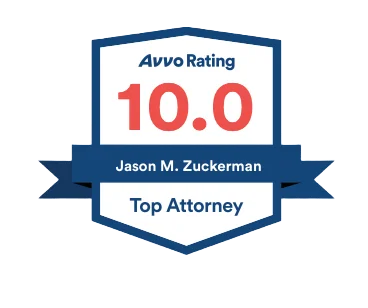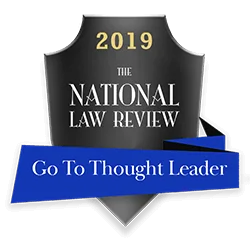To prevail on a motion for summary judgment, the movant must show that there is no genuine dispute as to any material fact and that the movant is entitled to judgment as a matter of law. Unfortunately, some federal judges misapply the summary judgment standard in employment discrimination cases by weighing the evidence and failing to construe the evidence in the light most favorable to the non-movant. In Tolan v. Cotton, 188 L.Ed.2d 895 (2014), the Supreme Court articulated the summary judgment standard:
[C]ourts may not resolve genuine disputes of fact in favor of the party seeking summary judgment . . . a “judge’s function” at summary judgment is not “to weigh the evidence and determine the truth of the matter but to determine whether there is a genuine issue for trial.” Anderson, 477 U. S., at 249. Summary judgment is appropriate only if “the movant shows that there is no genuine issue as to any material fact and the movant is entitled to judgment as a matter of law.” Fed. Rule Civ. Proc. 56(a). In making that determination, a court must view the evidence “in the light most favorable to the opposing party.” Adickes v. S. H. Kress & Co., 398 U. S. 144, 157 (1970).
Similarly, in Reeves v. Sanderson Plumbing Products, 530 U.S. 133 (2000), the Supreme Court set forth a standard that is too often ignored by district judges:
[T]he court must draw all reasonable inferences in favor of the nonmoving party, and it may not make credibility determinations or weigh the evidence . . . “Credibility determinations, the weighing of the evidence, and the drawing of legitimate inferences from the facts are jury functions, not those of a judge.” Liberty Lobby, supra, at 255, 106 S.Ct. 2505. Thus, although the court should review the record as a whole, it must disregard all evidence favorable to the moving party that the jury is not required to believe. See Wright & Miller 299. That is, the court should give credence to the evidence favoring the nonmovant as well as that “evidence supporting the moving party that is uncontradicted and unimpeached, at least to the extent that that evidence comes from disinterested witnesses.” Id., at 300.
In addition, the Supreme Court has cautioned that “summary procedures should be used sparingly . . . where motive and intent play lead roles . . . It is only when witnesses are present and subject to cross-examination that their credibility and the weight to be given their testimony can be appraised.” Pollar v. Columbia Broadcasting Sys., Inc., 368 U.S. 464, 473, 82 S.Ct. 486, 491 (1962). The opportunity to try a civil case before a jury should be a low bar and should focus on whether the evidence allows a jury to find for the non-movant.
For more information on summary judgment in discrimination cases, see Judge Chinn’s article Summary Judgment in Employment Discrimination Cases: A Judge’s Perspective and Professor Suja Thomas‘ book Unequal: How America’s Courts Undermine Discrimination Law.
The Employee Rights Advocacy Institute for Law and Policy has helpful resources for worker advocates seeking to vindicate workplace rights before a jury, including the following papers:
- Securing The Right To A Jury Trial: Attacking “Stray Remarks” At Summary Judgment
- Preserving The Right To A Jury Trial By Preventing Adverse Credibility Inferences At Summary Judgment
- Cracking The Comparator Code
To schedule a consultation with leading discrimination lawyer Eric Bachman, call us at 202-769-1681.
In March 2020, Judge Cabranes authored a significant opinion vacating an order granting summary judgment in a hostile work environment and retaliation case. See Rasmy v Marriott Intl. Inc., No.18‐3260‐cv, 2020 U.S. App. LEXIS 7023 (2d Cir. Mar. 6, 2020). The decision clarifies key issues concerning summary judgment in employment cases, including the following:
- “In a claim of a hostile work environment, the emphasis is on the hostility of the work environment as a whole, not the motivation of one decisionmaker, and liability is “determined only by looking at all the circumstances.” A plaintiff must show merely that discriminatory incidents were “sufficiently continuous and concerted to have altered the conditions of [the employee’s] working environment.” Accordingly, conduct not directly targeted at or spoken to an individual [so-called “stray remarks”] but purposefully taking place in his presence can nevertheless transform his work environment into a hostile or abusive one, and summary judgment . . . this basis was unwarranted.”
- “Although the presence of physical threats or impact on job performance are relevant to finding a hostile work environment, their absence is by no means dispositive. Rather, the overall severity and pervasiveness of discriminatory conduct must be considered. By its very nature that determination is bound to raise factual disputes that likely will not be proper for resolution at the summary judgment stage.”
- The “but-for” causation standard in a retaliation case applies at the later stage of the burden shifting-analysis when a plaintiff is attempting to demonstrate that an employer’s allegedly neutral reason for an adverse action is a pretext for retaliation, not at the prima facie stage.
- “Questions regarding the time gap and causal connection of an alleged retaliatory termination may entail special consideration of the size and complexity of a defendant employer, where termination of employment may involve multiple layers of decisionmakers, as well as the nature of plaintiff’s claims. In some such circumstances, a five-month time frame for a decision to fire an employee may not be exceptional.”
- “[T]he question of what motivated an employer’s desire to fire a worker is a quintessential jury function.”
- “It bears recalling, that in discrimination cases, plaintiffs rarely produce direct evidence of retaliation. As we observed in Carlton v. Mystic Transportation, Inc.:
[P]roof is seldom available with respect to an employer’s mental processes. Instead, plaintiffs in discrimination suits often must rely on the cumulative weight of circumstantial evidence, since an employer who discriminates against its employee is unlikely to leave a well-marked trail, such as making a notation to that effect in the employee’s personnel file. Ordinarily, plaintiff’s evidence establishing a prima facie case and defendant’s production of a nondiscriminatory reason for the employment action raise a question of fact to be resolved by the factfinder after a trial. Summary judgment is appropriate at this point only if the employer’s nondiscriminatory reason is dispositive and forecloses any issue of material fact.








